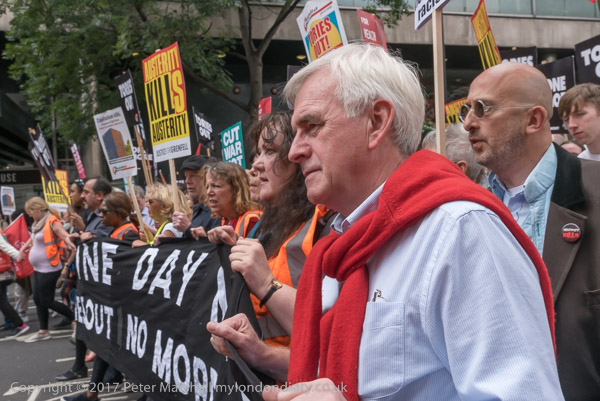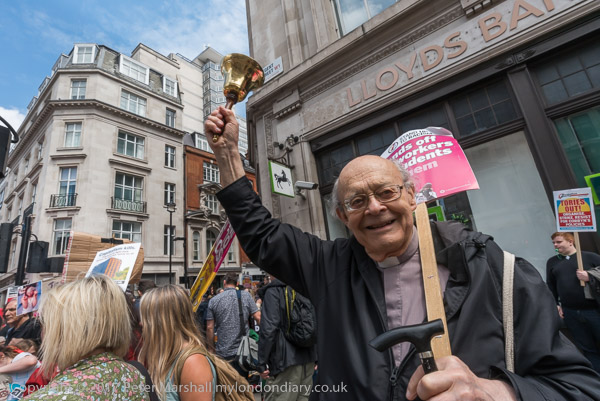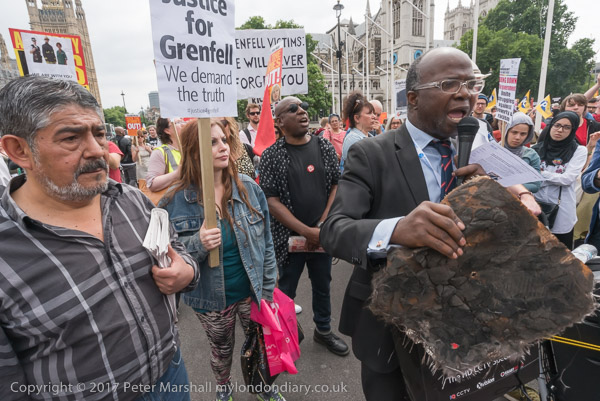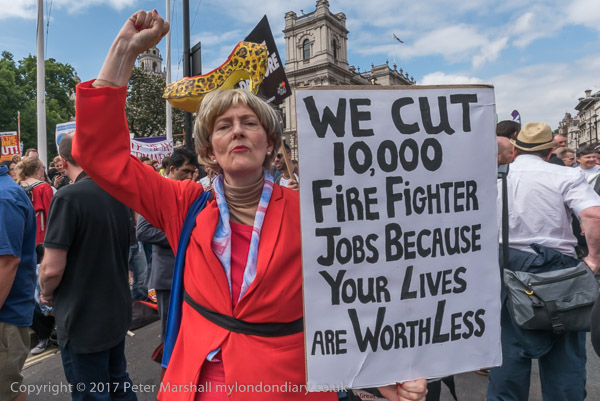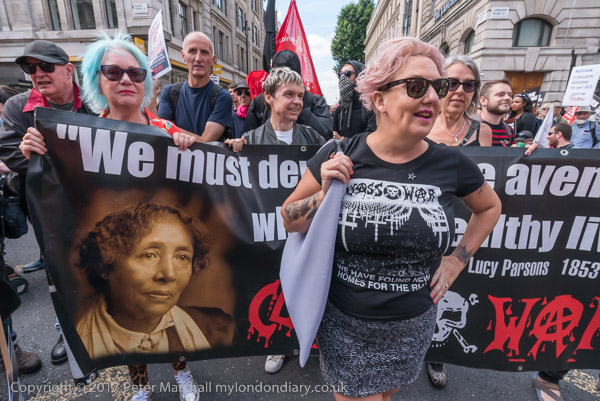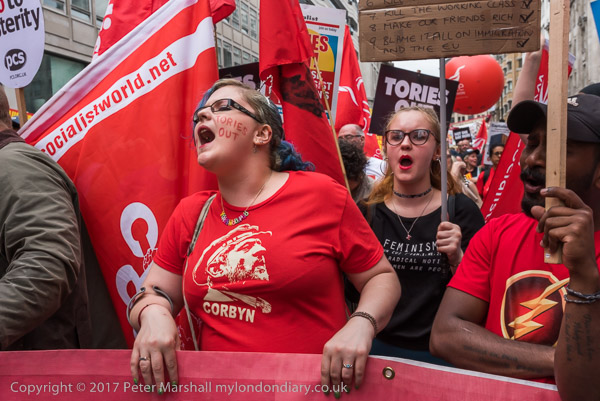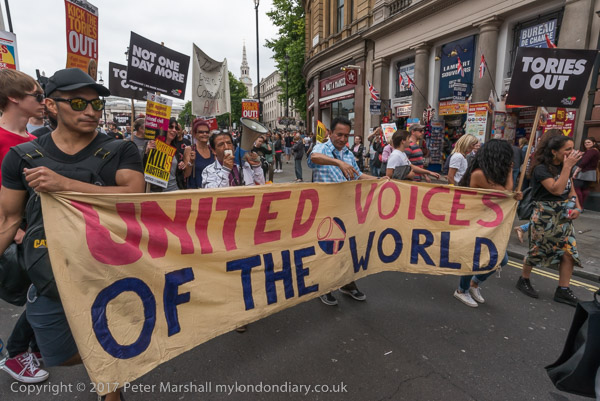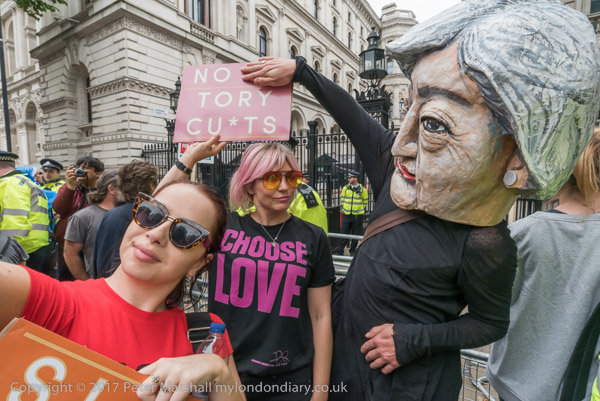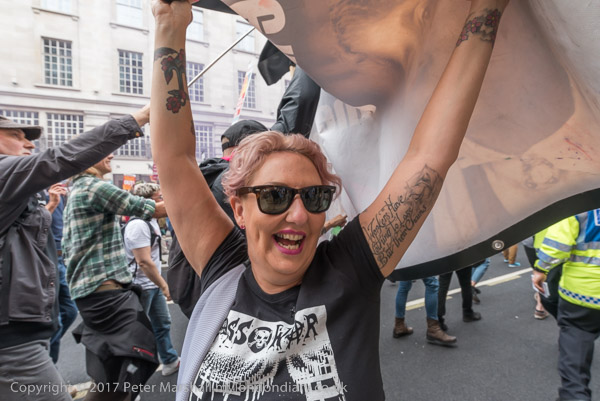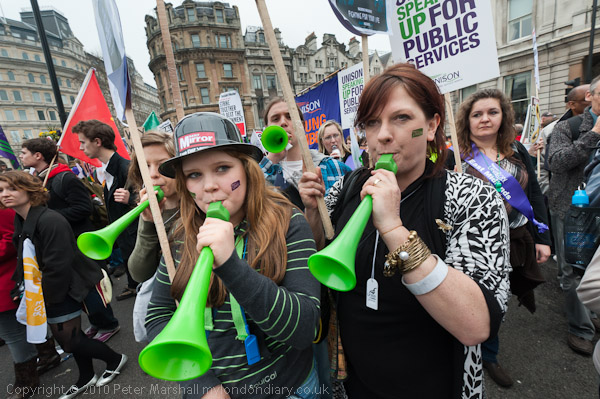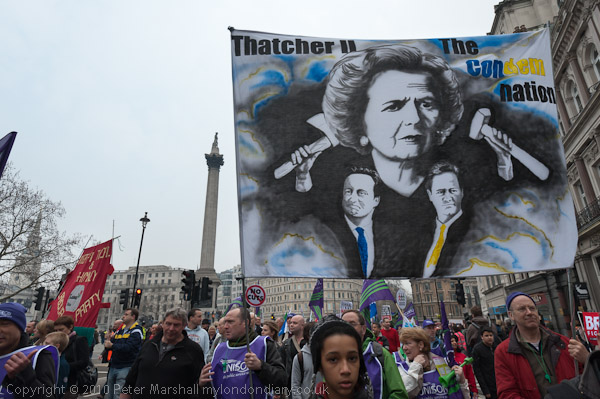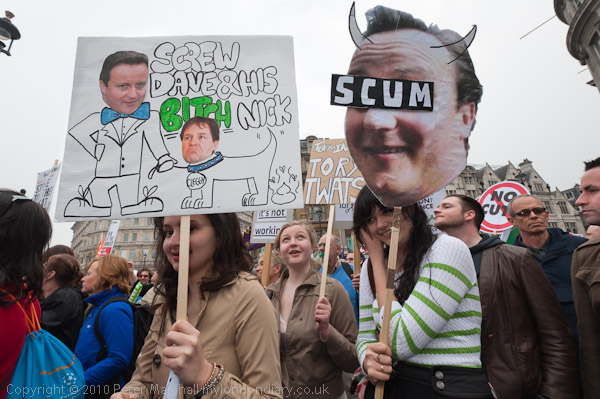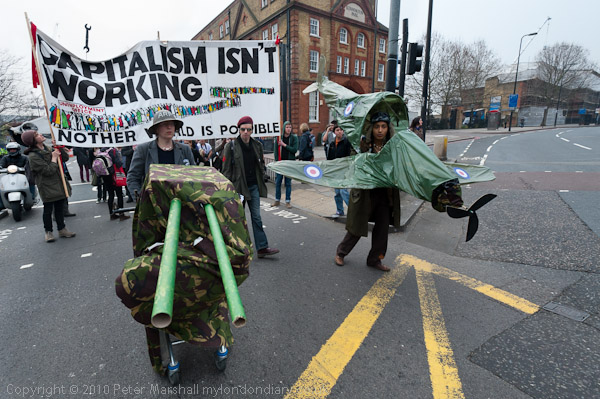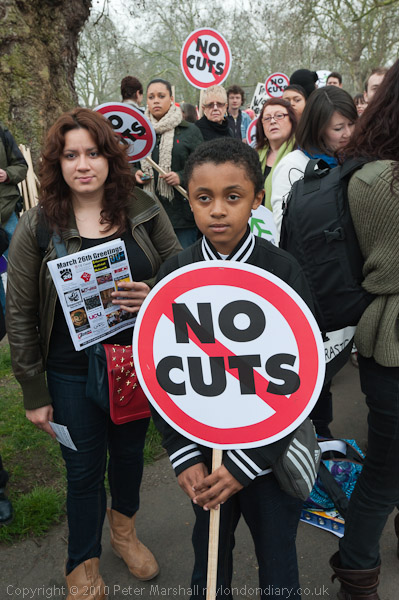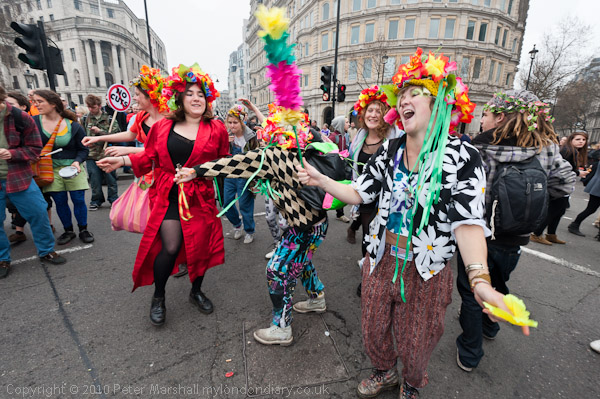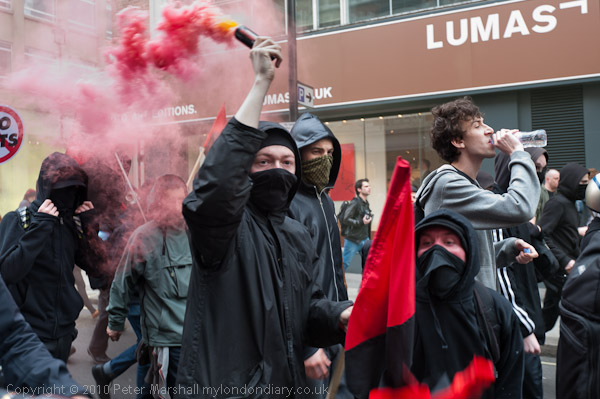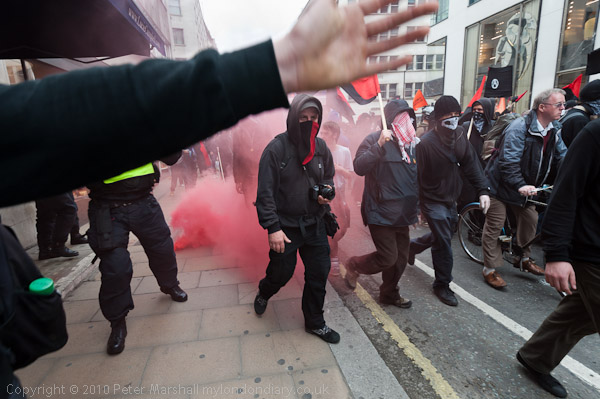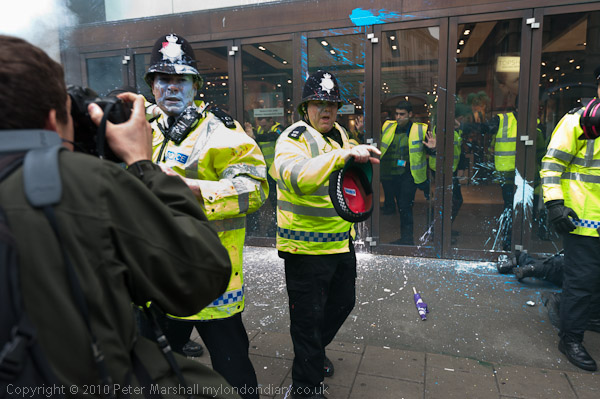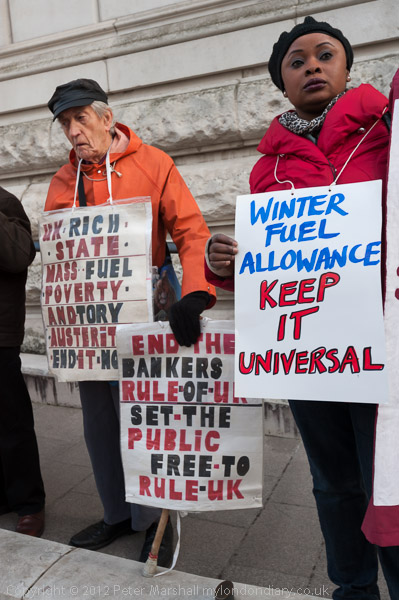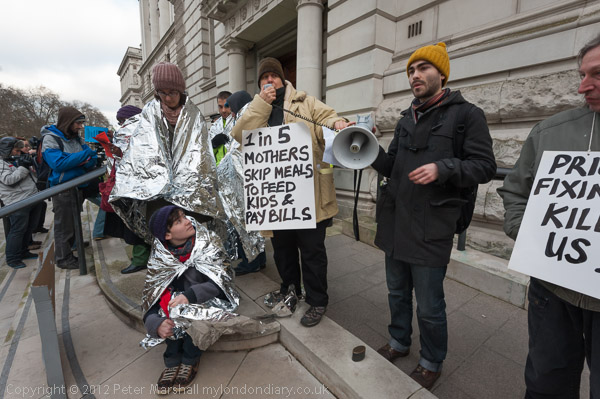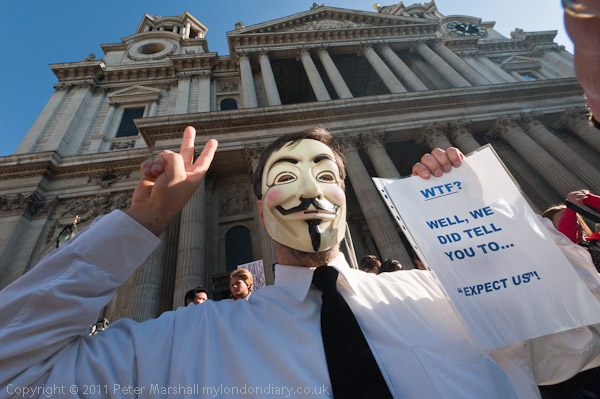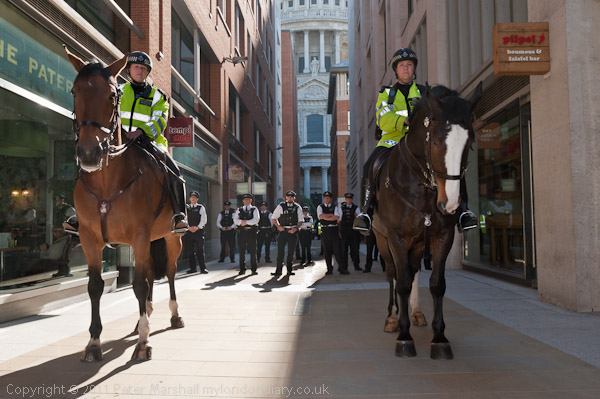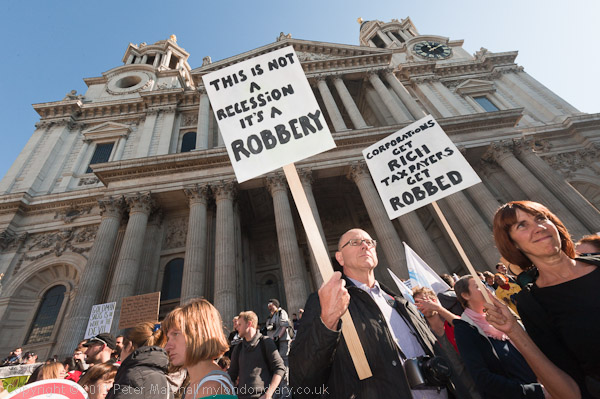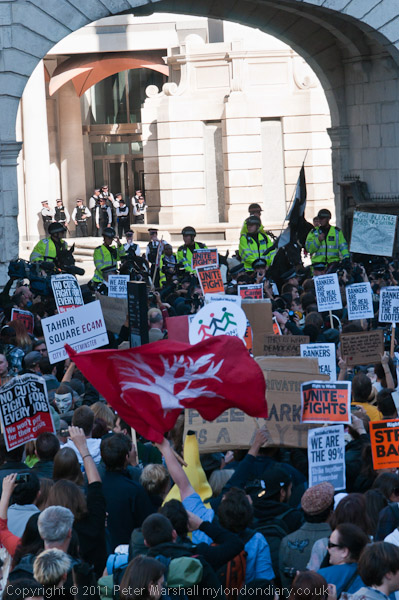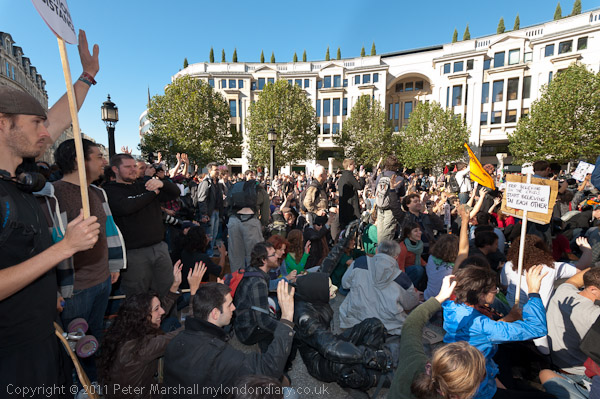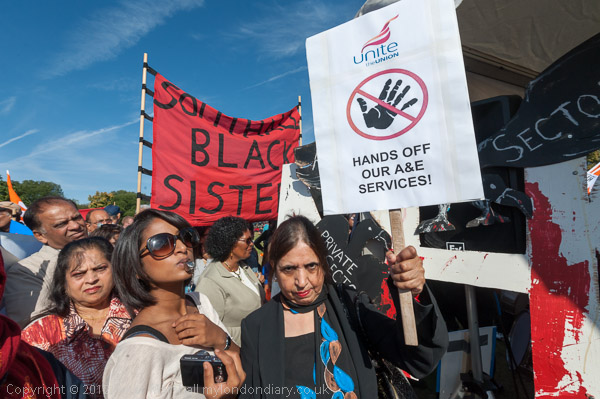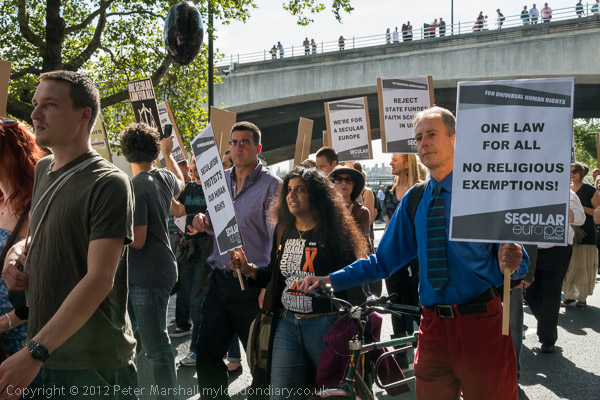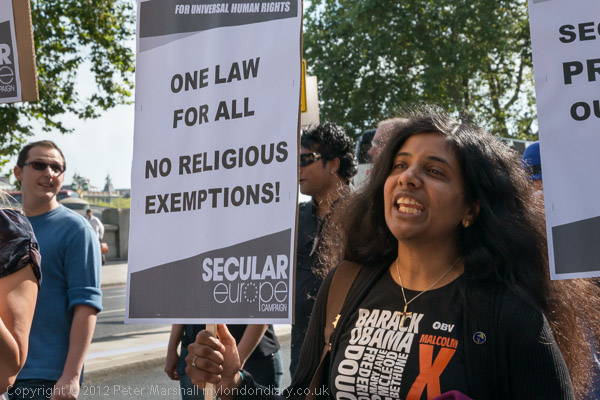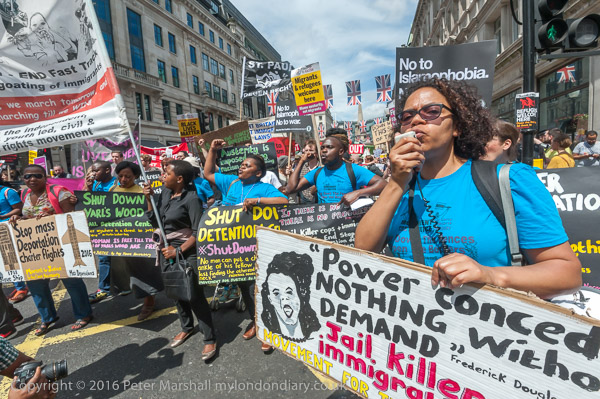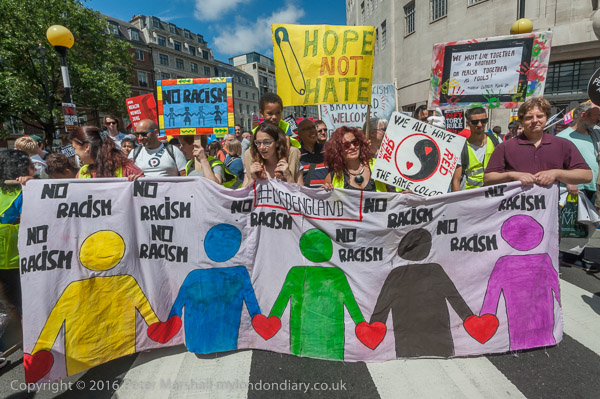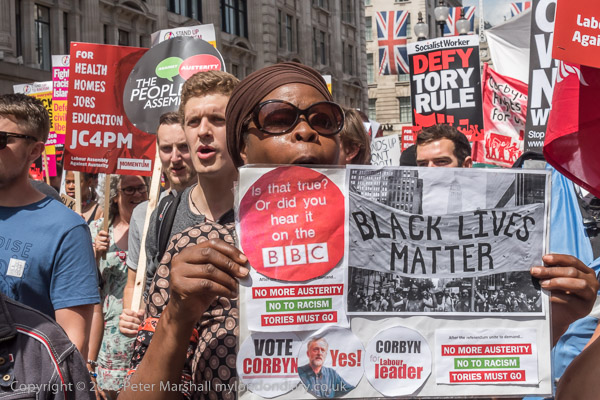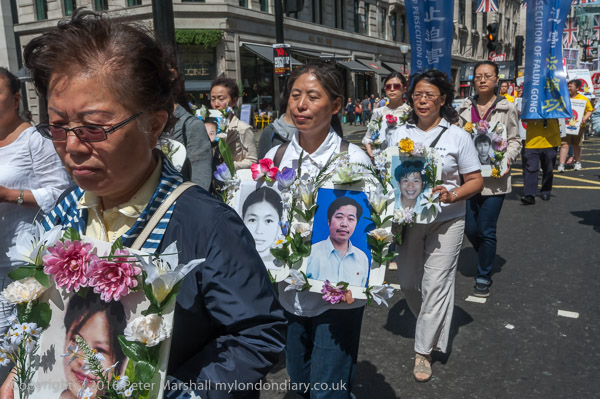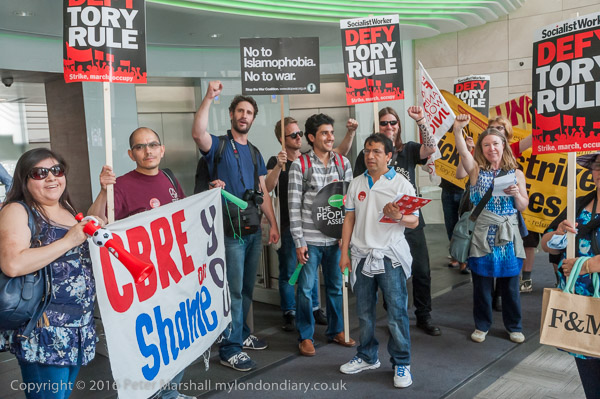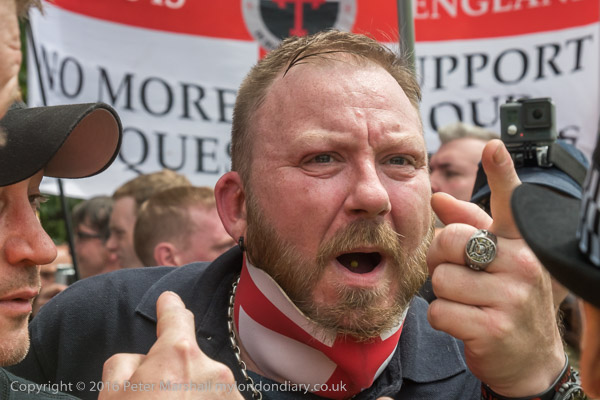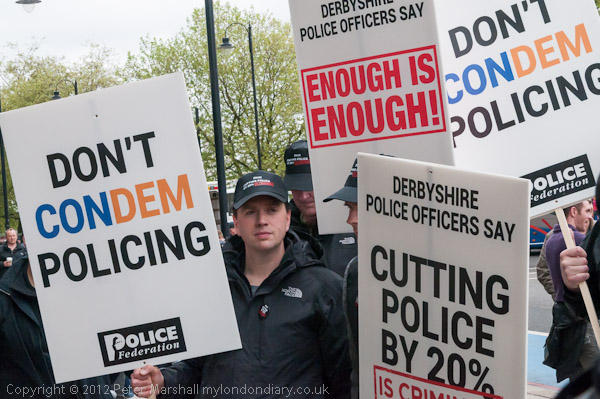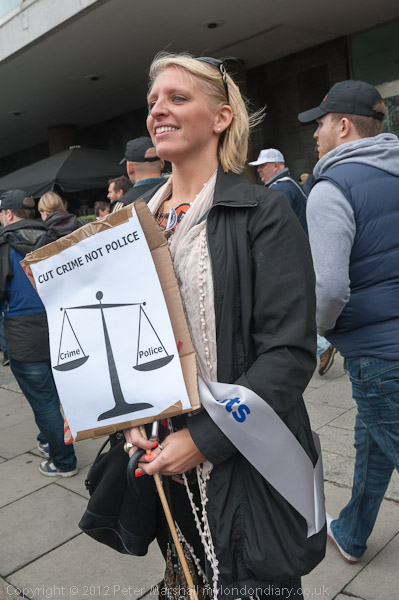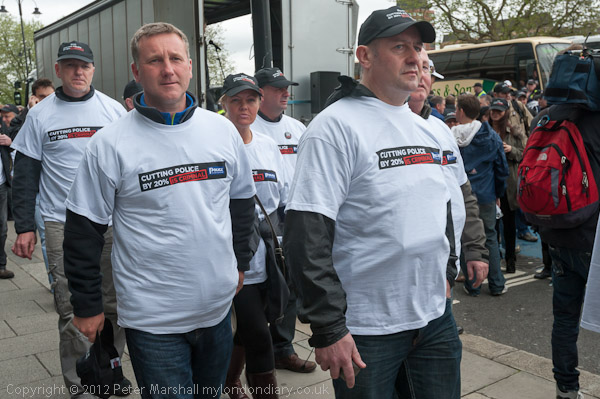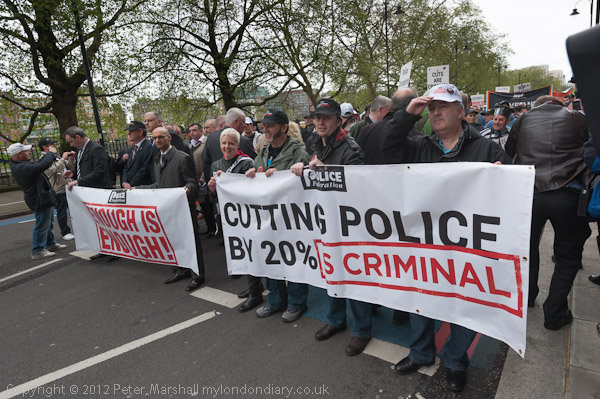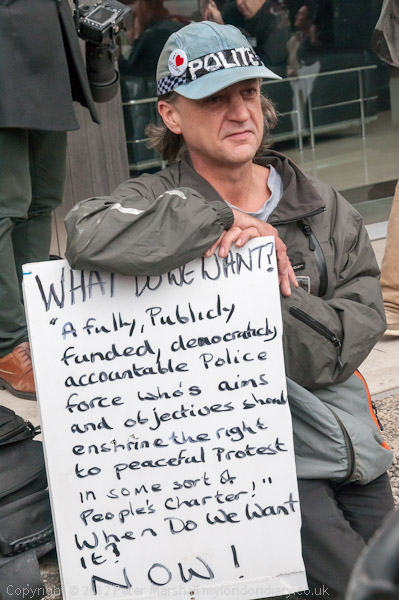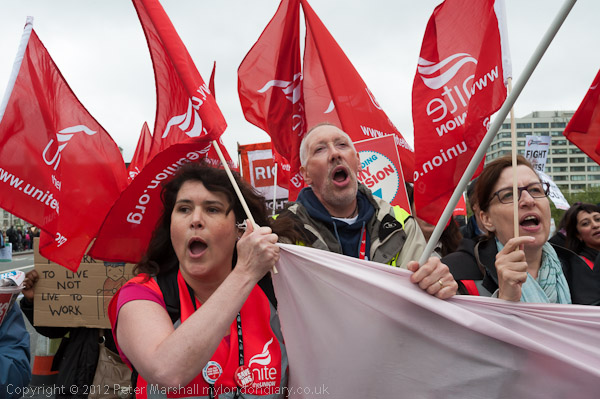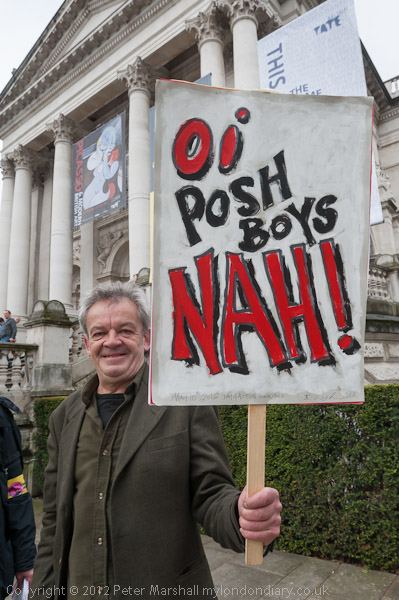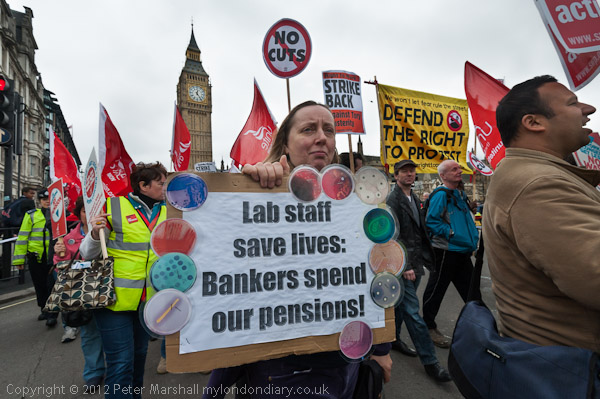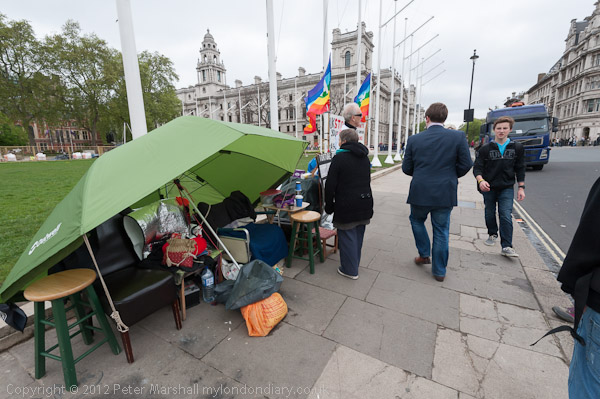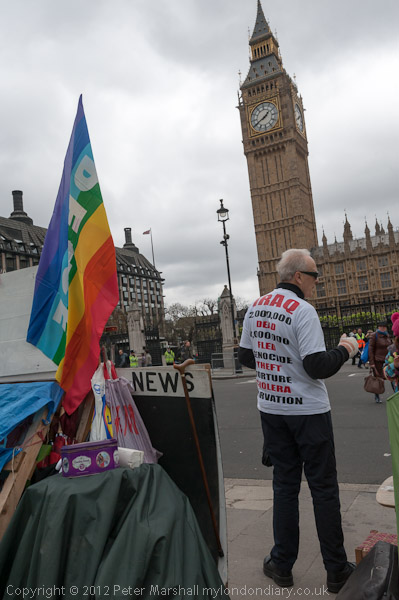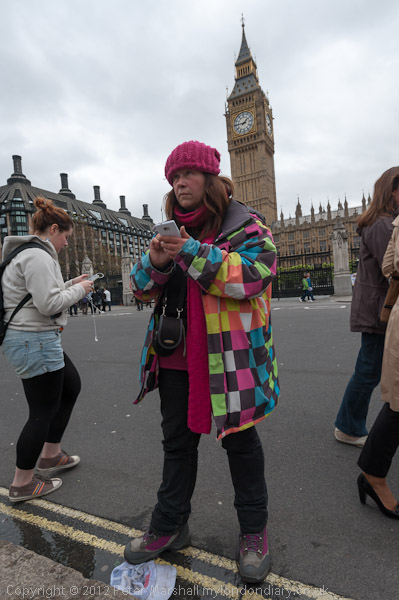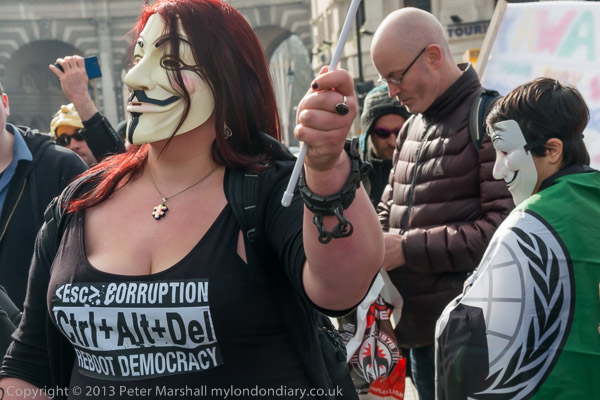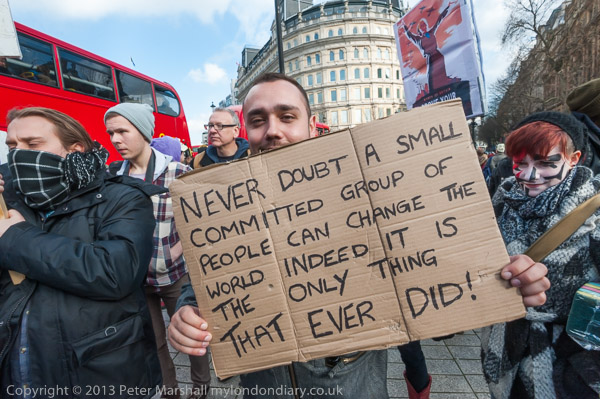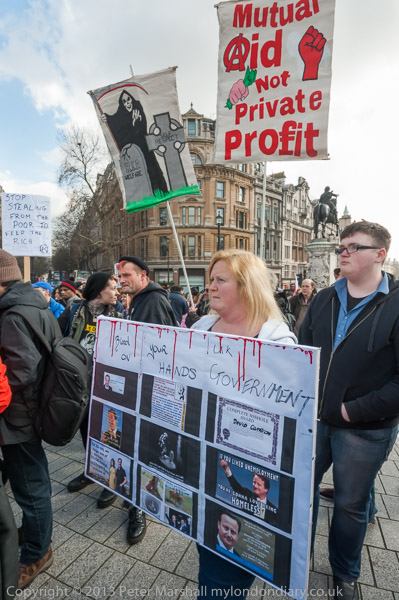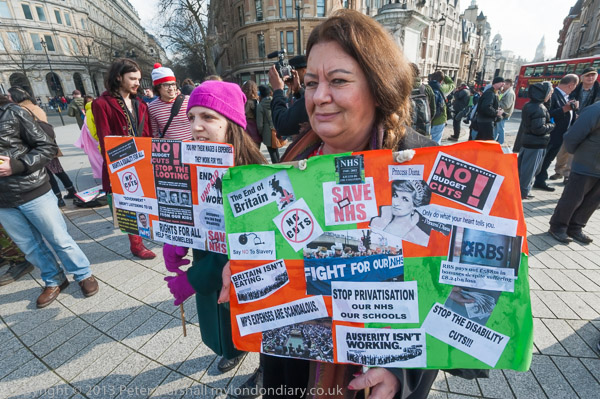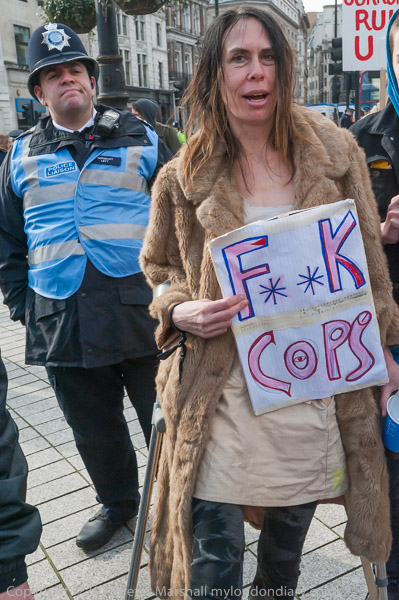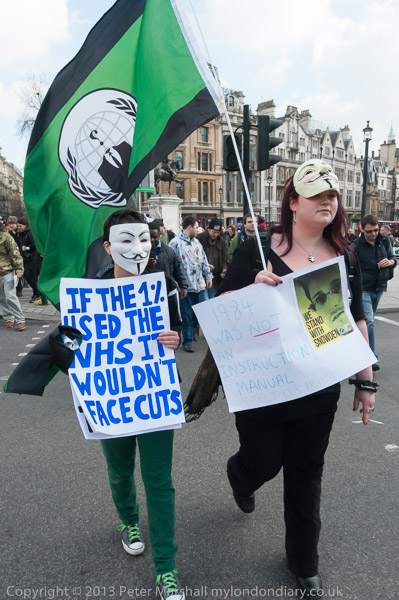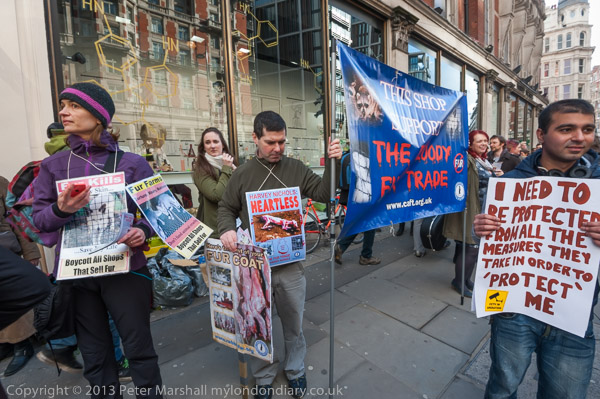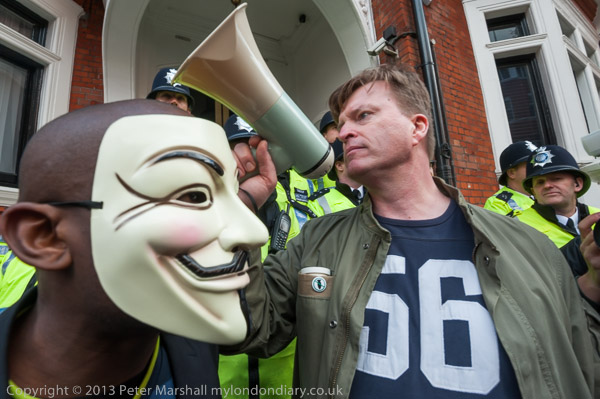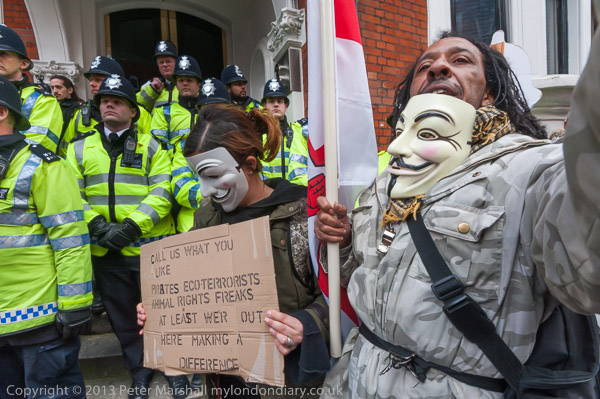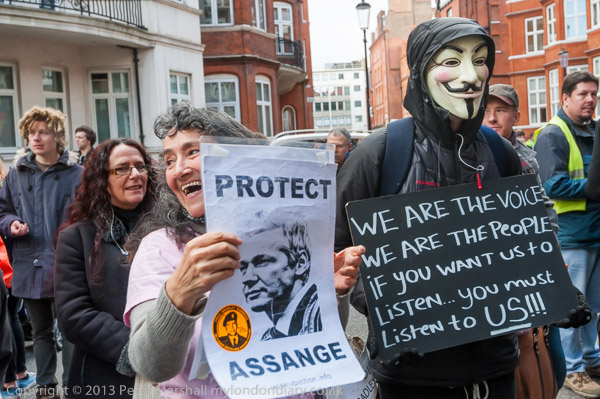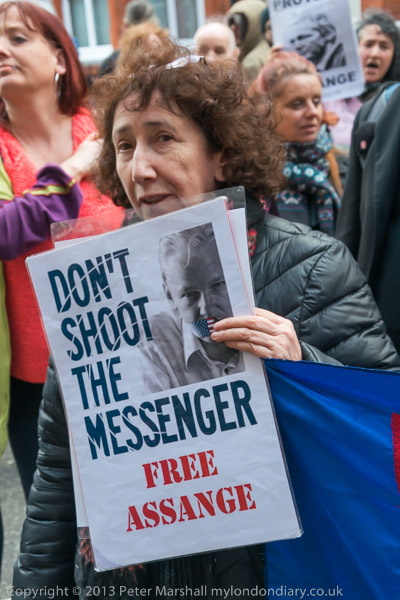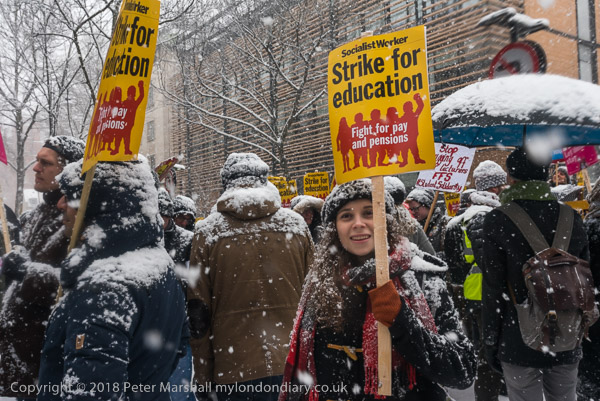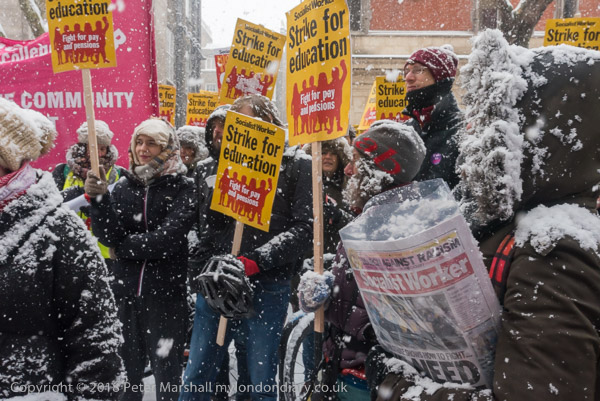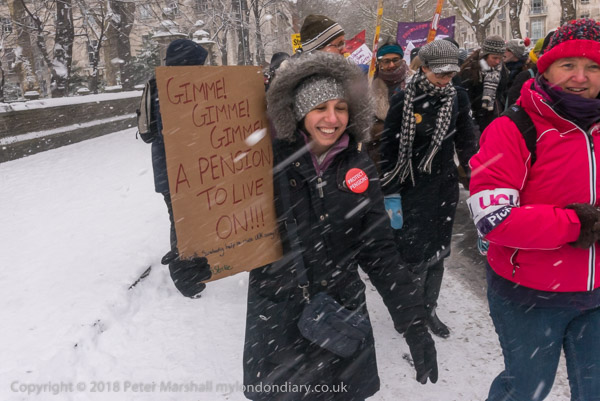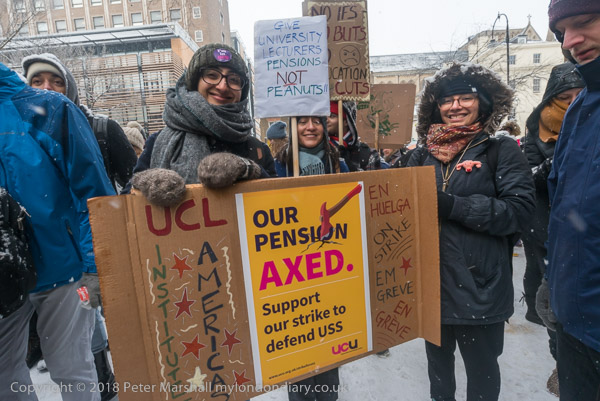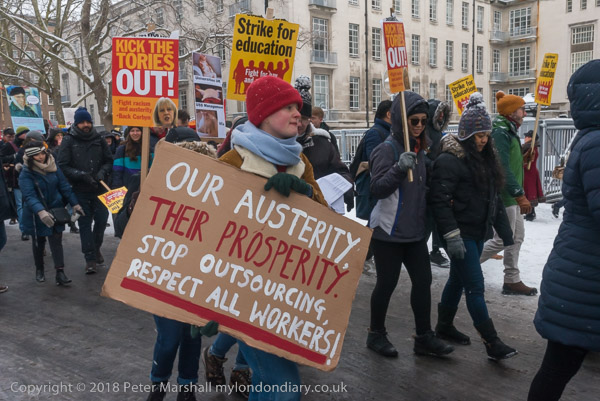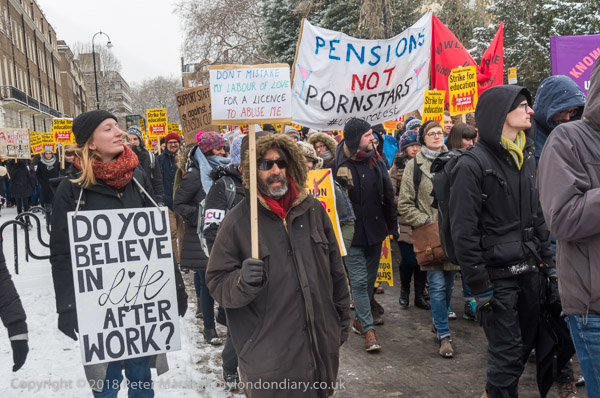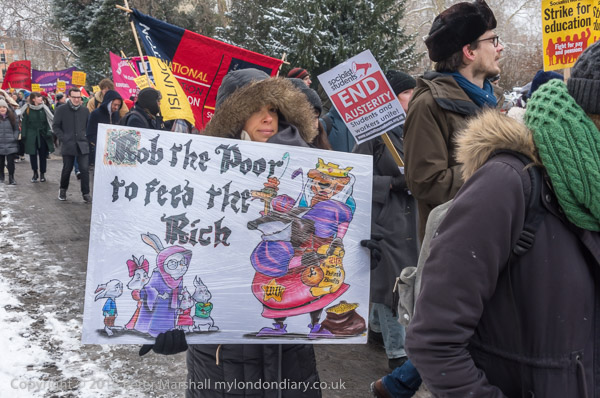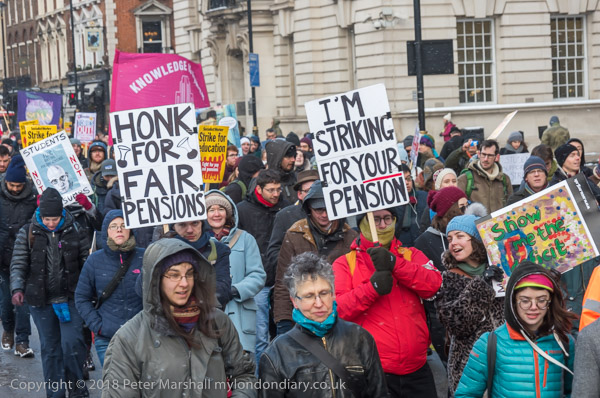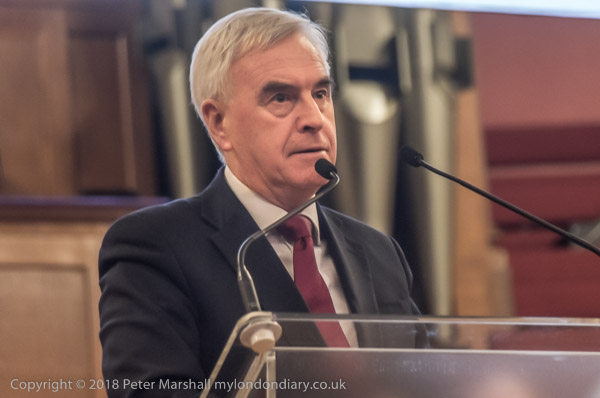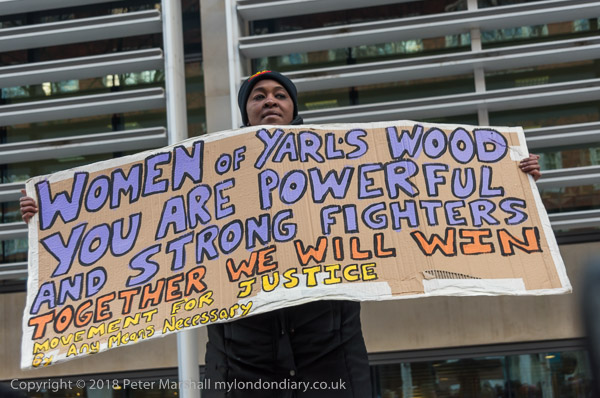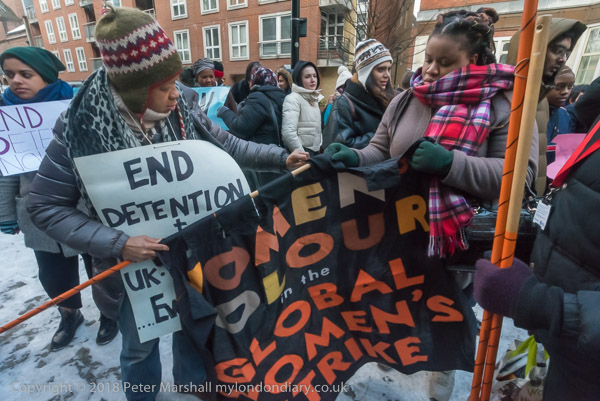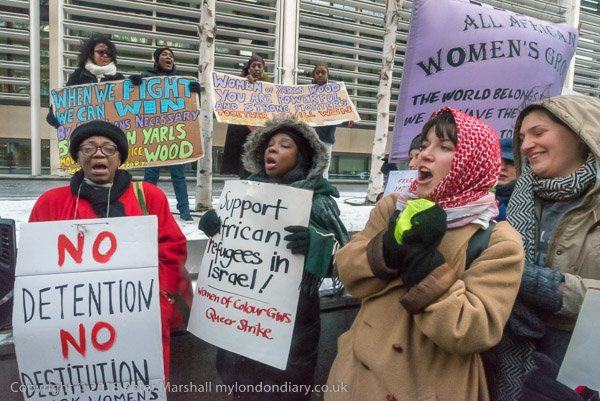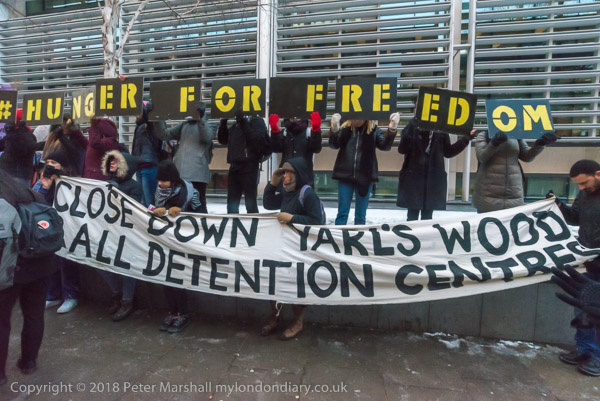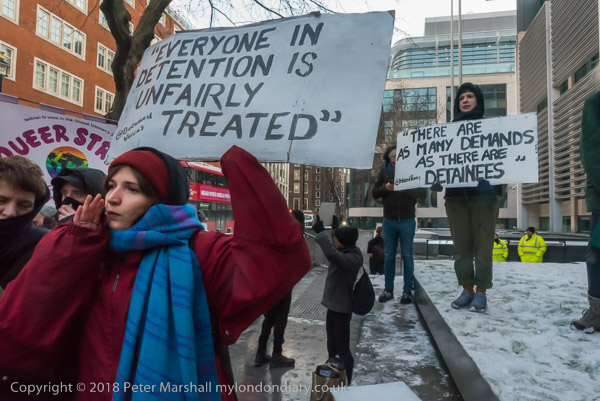Leveson & Cold Homes: On Thursday 29th November press and protesters were outside the QEII centre waiting for the publication of the Leveson inquiry report, and were joined briefly by people who had been protesting outside the treasury over George Osborne’s cuts and energy policies and later moved to protest outside parliament where Energy Secretary, Ed Davey was to introduce the Energy Bill.
Leveson Comes Out
QEII Centre
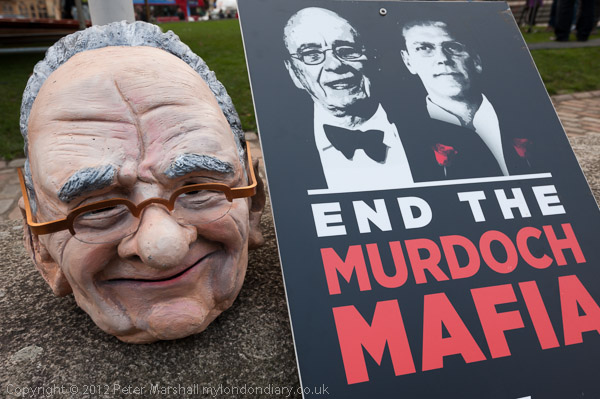
Lord Justice Leveson had been appointed in 2011 to lead an inquiry into the culture, practices, and ethics of the British press after the News of the World had been found to have illegally hacked into the phones of celebrities, politicians, royals and others since the 1990s.
Of course the News of the World which had been closed down by Murdoch’s News International in 2011 over this was not the only newspaper to have used illegal hacking. As well as other papers in the Murdoch Press it was said to be fairly widespread across the tabloid papers.

The Leveson Inquiry was to be in two parts and the report on Part 1 was due to be released on 29th November 2012. Part 2 which was to examine the extent of phone hacking in News International and other media as well as the complicity of the police in receiving bribes and other ways was shelved in 2015 and then scrapped in 2018.

Leveson found that the Press Complaints Commission was toothless and ineffective and recommended that a new voluntary independent body be set up. There are now two press regulators; Impress, which largely follows Leveson’s proposals and IPSO, the Independent Press Standards Organisation which as its name says remains independent, and which more publications have signed up to, while others, including The Guardian belong to neither.
This was a small but visually interesting protest, and ss I wrote in 2012:

Avaaz had brought large puppet heads of Murdoch and a gagged Cameron with placards ‘End the Murdoch Mafia’ and a flaming dustbin into which Murdoch lowered the Leveson report.

Political artist Kaya Mar had brought one of his paintings with the judge and a cart-load of people, though I couldn’t recognise them all.

And a protester from Kick Nuclear was walking up and down with his dog which was wearing a poster about Fukushima warning of the dangers of nuclear power.
More pictures at Leveson Comes Out.
Cold Homes Kill Treasury Protest
Westminster
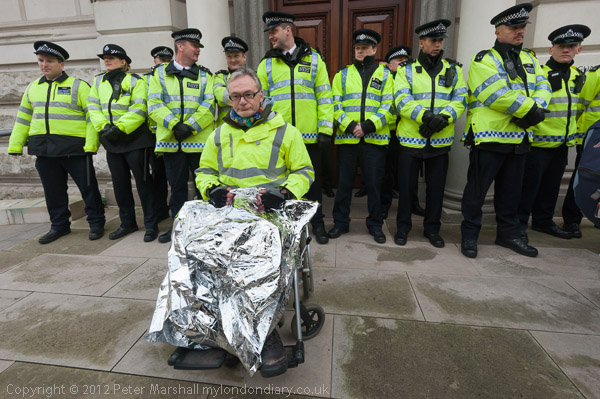
Fuel Poverty Action along with others including Disabled People Against Cuts, the Greater London Pensioners’ Association, Single Mothers’ Self-Defence, Southwark Pensioners’ Action Group and WinVisible (women with visible and invisible disabilities) had come to protest against the cuts to come from George Osborne’s energy bill which they say will cause 24,000 extra winter deaths.
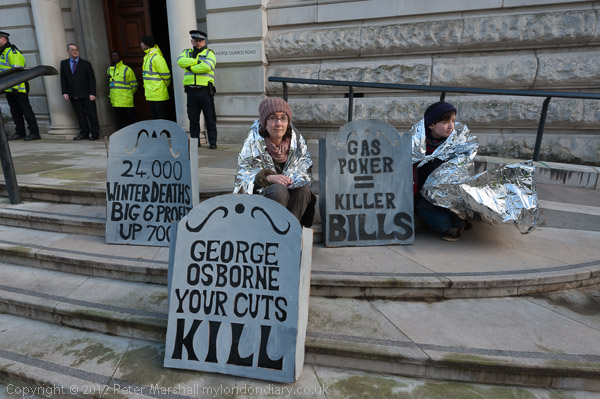
The protest which began outside the Treasury and then moved on pausing briefly at the Leveson protest outside the QEII centre to Parliament Square in front of the House of Commons where Secretary, Ed Davey, was to introduce the Energy Bill later that day.
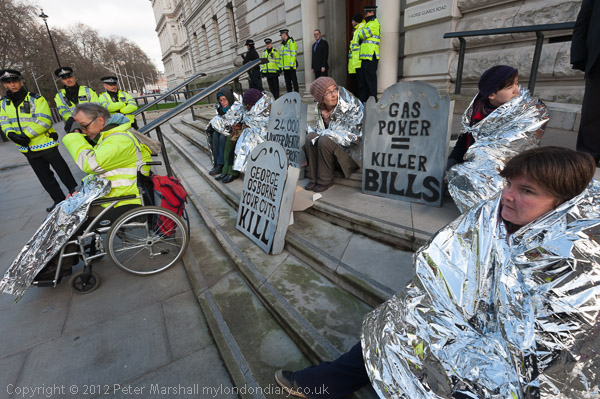
“The protesters had brought plastic silver reflective coated ‘space blankets’ to wear and had three ‘tombstones’ with the messages ‘George Osborne Your Cuts KILL’, ‘Gas Power = Killer Bills’ and ‘24,000 Winter Deaths – Big Six Profits up 700%’.”
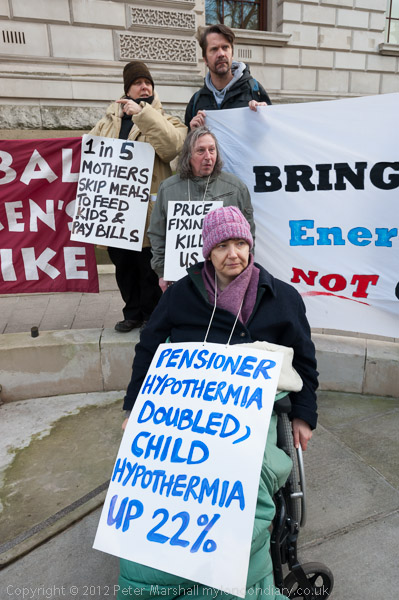
They say that already because of the government cuts many people were going hungry, with food banks being set up and kept busy even in the more prosperous areas of the country, and now with winter coming many have to chose between ‘eating or heating’.
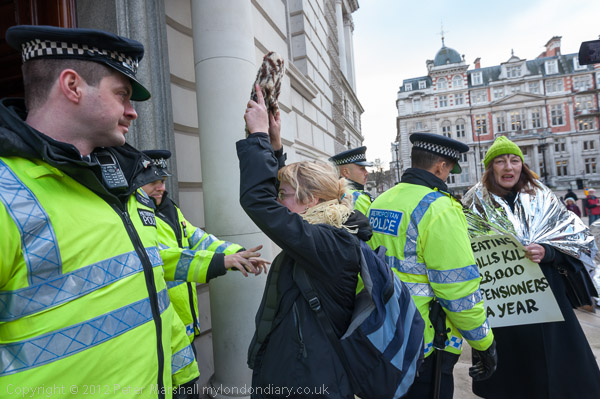
Cuts will mean more people suffering from “hypothermia, and the disabled in particular are hard hit, both because of the ruthless removal of benefits by poorly designed tests adminstered by poorly qualified testers with targets to meet and also because they often have special needs for heating.”
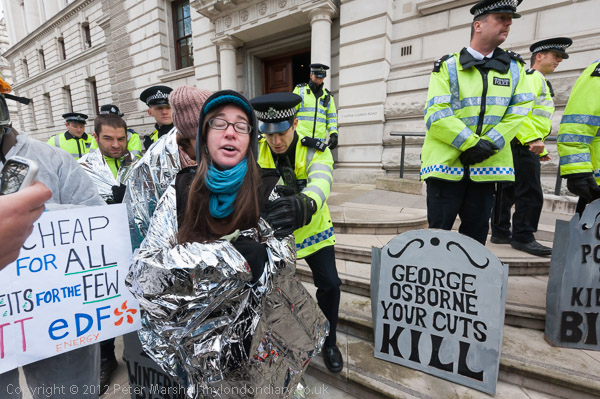
The protesters ignored police requests to leave the steps up to the Treasury and police then pushed them down, “usually with minimum force, but just occasionally rather more than necessary, but both protesters and police generally remained calm.” The rally continued on the pavement with speakers including Green Party leader Natalie Bennett.
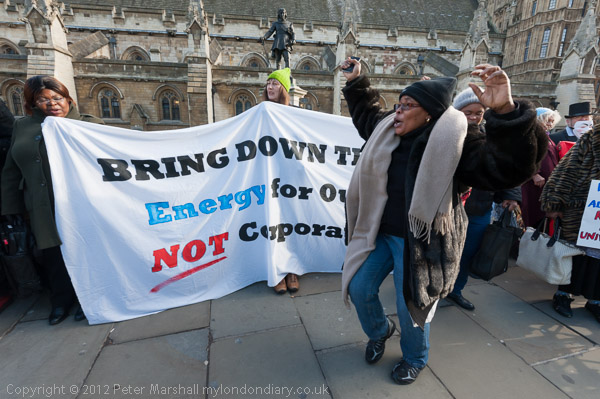
After this the group of 50 or so protesters moved to the pavement in front of the Houses of Parliament, pausing briefly on the way for photographs in front of those waiting for the Leveson report.
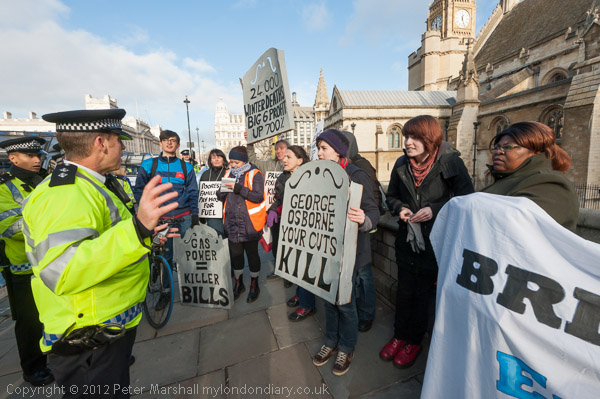
Police again tried to get them to move on when they stopped in front of the Houses of Parliament, at first telling them they had to move as “a Royal movement” was about to take place, an announcement that cause much hilarity and comment but no movement. A little later they were told they could stay, but decided instead to cross onto the grass in Parliament Square for some final photographs.

More pictures at Cold Homes Kill Treasury Protest.
Flickr – Facebook – My London Diary – Hull Photos – Lea Valley – Paris
London’s Industrial Heritage – London Photos
All photographs on this page are copyright © Peter Marshall.
Contact me to buy prints or licence to reproduce.

